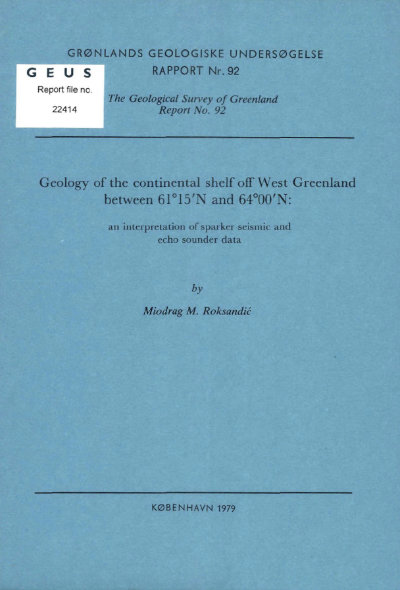Geology of the continental shelf of West Greenland between 61°15'N and 64°00': an interpretation or sparker seismic and echo sounder data
DOI:
https://doi.org/10.34194/rapggu.v92.7633Abstract
Five types of sea floor have been recognized by the analysis of sparker seismic sections, echograms and bathymetric maps. Seismic facies analysis has made it possibie to distinguish several geological units: postglacial channel fill, lateral moraines, ground moraines, proglacial stratified drift, preglacial fluvial deposits, stratified deposits of marine(?) origin and crystalline basement. Deposition of the marine(?) stratified deposits was interrupted due to a regression. The fluvial deposits were formed on the emerged land area. The ice margin must have advanced over the fluvial deposits and at its maximum extent the ice covered the area of the 'strandflat.' In the marginal and transverse channels and on parts of the banks proglacial stratified drift was deposited. Later the transverse channels became the sites of glaciallobes. The proglacial stratified drift was partly removed by glacial erosion, while lateral and ground moraines were formed. It is possibie that the offshore banks have been at least pardy covered by the ice sheet during a more recent glaciation. The postglacial channel fill is the youngest unit described and there is probably still deposition of these sediments in the Frederikshåb Dyb.
Downloads
Published
Issue
Section
License
This article is distributed under a CC-BY 4.0 licence, permitting free redistribution and reproduction for any purpose, even commercial, provided proper citation of the original work. Author(s) retain copyright over the article contents.


